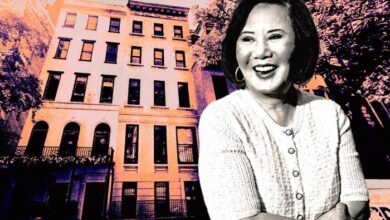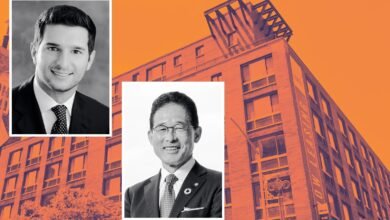Should New York City Punish or Legalize Single-Room Occupancy?

Let’s talk single-room occupancy.
The Department of Buildings last month dished out $180,000 in penalties at 915 55th Street in Brooklyn, where inspectors found the building had been converted from a legal 10-family dwelling to an illegal 22-family dwelling.
A century ago, those 12 single-room occupancies could have been legally created, but SROs have long been deemed inhumane.
Homeless shelters, on the other hand, are not considered inhumane by city policymakers. Shelters are where the city sends people who cannot find an affordable apartment and have nowhere else to go.
Given a choice between a congregate homeless shelter and an SRO unit, virtually all New Yorkers would choose an SRO — a room to sleep in with access to shared kitchens and bathrooms. Yet few legal SROs remain from the era when they were common housing for new arrivals.
Policymakers should reconcile this discrepancy. Not only would legal SROs provide affordable housing and an alternative to shelters, but they would be regulated to ensure safety for occupants and first responders.
Until then, enforcement of illegal SROs continues. It’s a perpetual game of Whac-a-Mole. In fact, penalties for them were accelerated a few years ago. They typically account for the largest fines in the Department of Buildings’ monthly enforcement bulletin.
Why, then, do unauthorized SROs keep popping up? Their owners either:
- do not realize they are illegal,
- expect the rent to exceed any fines or
- consider illegal SROs a victimless crime, if not a public benefit.
No. 2 is probably the most common reason. But there’s an underlying explanation for all three: SROs make sense in a city with a tight housing market and lots of single people and immigrants.
Even people who consider themselves to be law-abiding make exceptions for crimes they or the police consider harmless. Drivers doing 70 mph on the Long Island Expressway are not pulled over for speeding — and those who obey the 55-mph speed limit cause a lot of dangerous lane-changing.
Crossing the street against a red light is practically required of New Yorkers, lest they be mistaken for tourists. Jaywalking was outlawed in 1958, but it is safer than crossing at intersections with turning conflicts. It was finally legalized earlier this year because on the rare occasions that the law was enforced, 92 percent of summonses were issued to Black or Latino people.
Illegally carving up a building is different on two levels: It is enforced more diligently and it puts firefighters and tenants at risk.
But if sleeping in a locked room, illegally partitioned unit or illicit basement apartment is dangerous, so is being homeless or living among gangs in El Salvador.
Legal SROs also don’t cost city taxpayers $144 per bed, per day, as homeless shelters for singles do.
What we’re thinking about: The City Council slammed Mayor Eric Adams’ veto of a bill removing criminal misdemeanor penalties for illegal street vending.
Regardless of whether the bill is a good idea, this comparison by the Council is off the mark: “Vendors who are Black or Latino are disproportionately impacted, receiving nearly 80 percent of all the criminal tickets issued in 2023, while making up just 50 percent of the city’s overall population.”
The actual numbers are 78 percent and 52 percent, respectively, but the relevant statistic is the percentage of unlicensed street vendors (rather than all New Yorkers) who are Black or Latino. The best number I could find (from a 2021 survey by the Street Vendor Project) is that 60 percent of all street vendors in the city are Black or Latino. Send your thoughts on the bill to eengquist@therealdeal.com.
A thing we’ve learned: The national vacancy rate for industrial properties is up to 9 percent, the highest in a decade, according to CommercialCafe. Despite that, rents have climbed 6.2 percent in the past year.
Rising rents in the face of increasing vacancy are unsustainable, but rent is a lagging indicator, so it will level off. Indeed, Savills found rents have dropped 5 percent or more from their peaks in 40 percent of markets.
The one-year increase probably reflects better quality buildings, thanks to a wave of new supply put up by developers responding to low vacancy and high demand from the late 2010s through the pandemic. Savills reported that positive absorption is being driven by Class A buildings, while Class B and C properties are losing tenants.
Elsewhere…
Subway service was disrupted after a power outage near the West Fourth Street station, Gothamist reported. This is the second time this week a power outage near the station caused delays, angering commuters.
Speaking of the subway, it’s about to get more expensive. The MTA on Wednesday unveiled a proposal for a 10-cent fare hike, which would bring the cost of a ride to $3, according to The City. The new price is set to kick in on Jan. 4.
Gov. Kathy Hochul also announced that the MTA board has approved Jonathan Rose Companies to turn a Hudson Valley parking lot into a residential development, Mass Transit Mag reported. The project, next to the Beacon Metro-North station, will have 265 units of mixed-income housing. It is the latest effort in Hochul’s bid to repurpose state-owned sites into homes.
— Quinn Waller
Closing time
Residential: The top residential deal recorded Thursday was $9 million for a 3,000-square-foot co-op unit at 450 East 52nd Street in Turtle Bay. Tyler Whitman of The Agency had the listing.
Commercial: The top commercial deal recorded was $22 million for a 45,700-square-foot office property at 41 Elizabeth Street in Chinatown.
New to the Market: The highest price for a residential property hitting the market was $5.45 million for a 2,500-square-foot condominium unit at 48 Mercer Street in Soho. The Eklund | Gomes Team of Douglas Elliman had the listing.
Breaking Ground: The largest new building application filed was for a 47,603-square-foot, 73-unit mixed-use building at 224 Beach 28 Street in Far Rockaway. Kao Hwa Lee filed the permit on behalf of Zev Mayer. The architect/developer team also filed a permit at the adjacent lot for a 45,829-square-foot, 61-unit residential project at 25 Maple Court.
— Matthew Elo




